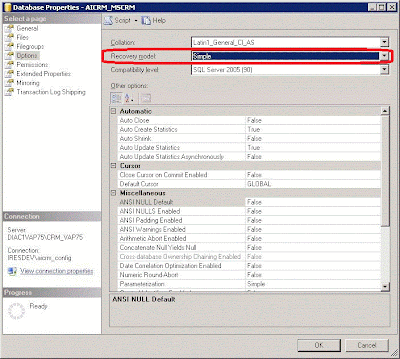
 You may also get various other errors.
You may also get various other errors.This error is probably related to the maximum number of concurrent TCP connections that Internet Explorer 6 can open. By default IE 6 only allows maximum of two TCP connections. If the browser tries to open a third, it freezes and waits for another connection to become available. This is particularly seen on a web page with several http AJAX type calls to the server. Various CRM 4.0 components such as the date/time field use AJAX to retrieve data.
Open RegeditNavigate to [HKEY_CURRRENT_USER\Software\Microsoft\Windows\CurrentVersion\Internet Settings]
Add a new DWORD
MaxConnectionsPer1_0Server
Enter a decimal value for the new Key of at least 8
Add another new DWORD
MaxConnectionsPerServer
Enter a decimal value for the new Key of at least 8
More details on setting this registry key: http://www.windowsreference.com/internet-explorer/speed-up-internet-explorer-by-tweaking-maximum-connections/




_4277_4279.gif)